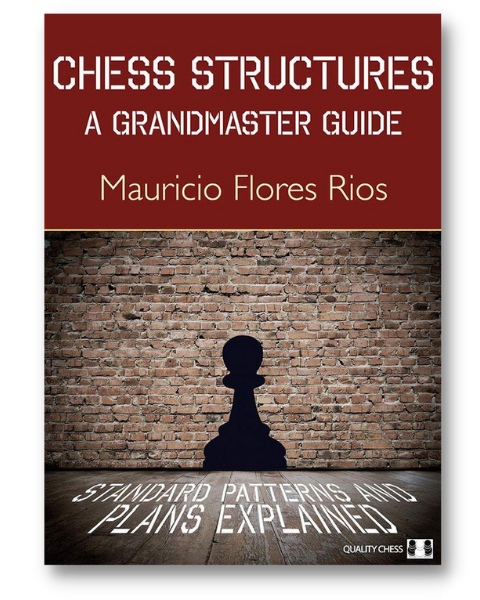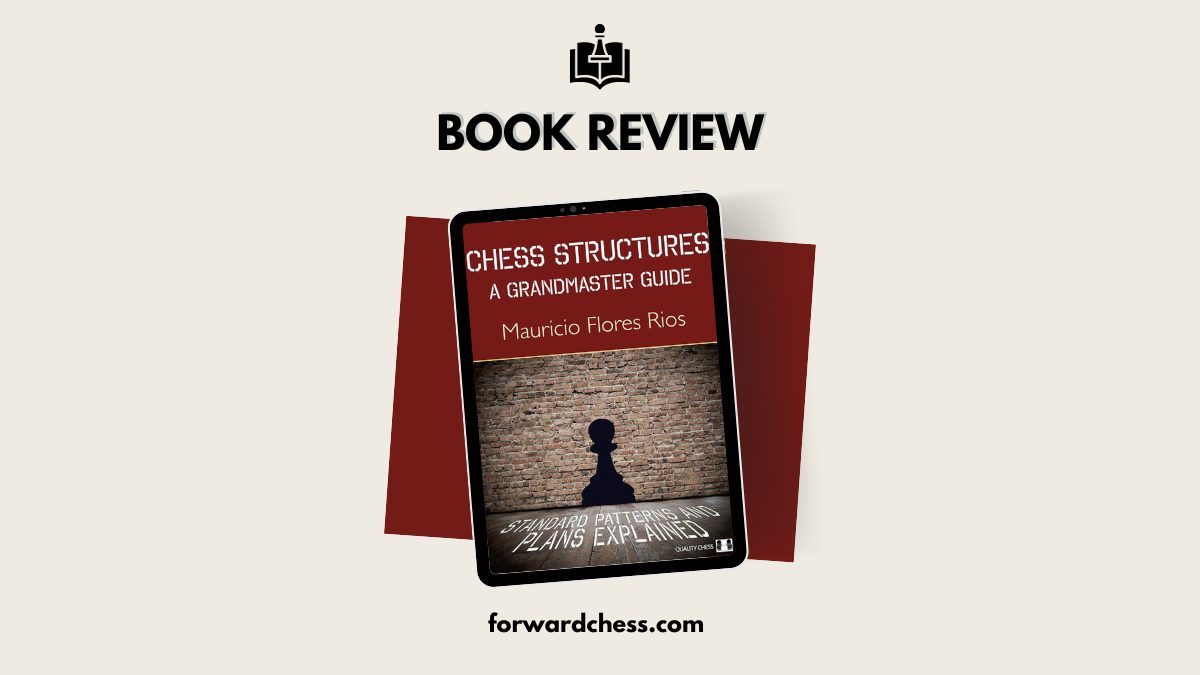Book Review of Chess Structures – A Grandmaster Guide
“Pawns not only create the sketch for the whole painting, they are also the soil, the foundation, of any position.”
– Former World Champion, Anatoly Karpov.
In his book, Secrets of Modern Chess Strategy (1998), IM John Watson wrote:
“The theory of pawn structures … has probably advanced more than any other area of the game over the last sixty years.”
Pawn structures are usually discussed to varying degrees in books on chess strategy. In addition, some previous books have also been written solely on this topic. Of these books, Pawn Power in Chess by Hans Kmoch (1959) is one of the earliest and perhaps most influential. Of course, the book was written around 60 years ago, and it’s not surprising that it’s out of date in some areas. In addition, it’s also hampered by some obscure terminology. Hence, a modern book on pawn structures would be welcomed by chess players, and that is the book that GM Flores Rios has attempted to write.

The author describes his aims for the book as follows.
“Chess Structures – A Grandmaster Guide emphasizes clarity, precision, and completeness over generality. I do not intend to teach rules applicable to every position. Such rules typically do not exist… My aim is to provide an easy-to-understand strategic guide to the most frequently occurring classes of positions in chess. I hope readers will find this helpful, as it greatly reduces ambiguity; it is clear when rules will be valid and when they will not.”
The book discusses 28 of the most common pawn structures using 140 games or game fragments. As the author notes, his choices of structures don’t include all the possible pawn structures, but his choices are based on three overarching principles:
- Strategic structures rather than tactical structures
- Frequently occurring structures
- Fixed pawn structures rather than flexible structures
In particular, the book mostly emphasizes strategy over tactics, although of course, tactical issues are often in the background in the included games.
The pawn structures are discussed in 22 chapters and are grouped into five families of similar structures. This grouping allows readers to focus on pawn structures that arise in their preferred openings as a starting point. Flores Rios writes:
“I understand many readers have limited time and do not wish to read an entire book if they are only likely to encounter a few of the pawn structures I discuss. For this reason, chapters are largely self-contained, while similar chapters will be found close to one another and arranged in a logical sequence.
I took great care in ordering chapters so that all required knowledge would be available when needed. Many pawn structures can transpose to another. If structure B is likely to transpose to structure A, then I mention structure A at an earlier stage in the book. When the reader studies structure B, he will be able to understand whether transposing to structure A is favorable or not. This makes the learning process run smoothly and comprehensively.”
The book also includes two final chapters with 50 exercises and their detailed solutions.
Each chapter on a particular pawn structure starts with a summary of its features and the typical plans available for White and Black, and how effective they are likely to be. These plans are linked to the games in the chapter. Each game starts with a set of learning objectives and concludes with some final remarks to summarise the key moments in the game. This approach makes it much easier for the reader to absorb the material. The annotations to the games include plenty of prose to balance the detailed variations.
Two examples from the book are given below, with annotations from the book.
In conclusion, this is an exceptional book on a fundamental topic in chess. As Karpov notes in the quote above, mastering the theory of pawn structures is an essential skill for chess improvement at all levels of chess. Flores Rios has written a lucid book that help readers to acquire this skill, and without doubt it will remain one of the standard texts in this area.
Have any thoughts or questions? Let us know in the comments!
- Book Review: A Guide To Chess Improvement - September 9, 2024
- Review: Chess Coach by Vladimir Barsky - August 26, 2024
- Book Review: Oops! I Resigned One More Time - July 31, 2024
